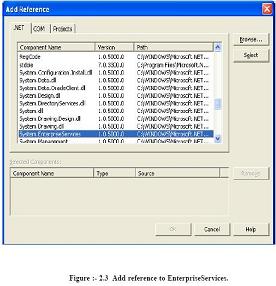How do you do object pooling in .NET
How do you do object pooling in .NET ?
✍: Guest
COM+ reduces overhead by creating object from scratch. So in COM+ when object is activated
its activated from pool and when its deactivated it’s pushed back to the pool. Object pooling is
configures by using the “ObjectPoolingAttribute” to the class.
Note:- When a class is marked with objectpooling attribute it can not be inherited.
ObjectPooling(MinPoolSize := 2, MaxPoolSize := 5, CreationTimeout := 20000)> _
Public Class testingclass Inherits ServicedComponent Public Sub DoWork() ' Method contents go here. End Sub End Class
Above is a sample code which has the “ObjectPooling” attribute defined. Below is a sample code which uses the class.
Public Class App Overloads Public Shared Sub Main(args() As String) Dim xyz As New TestObjectPooling() xyz.doWork() ServicedComponent.DisposeObject (xyz) End Sub End Class
Above is a sample code which uses the object pooled object. Note the DisposeObject() This ensures its safe return to the object pool.
2007-10-22, 5175👍, 0💬
